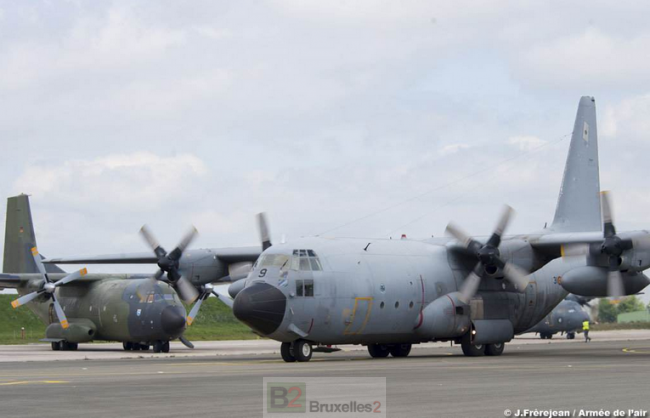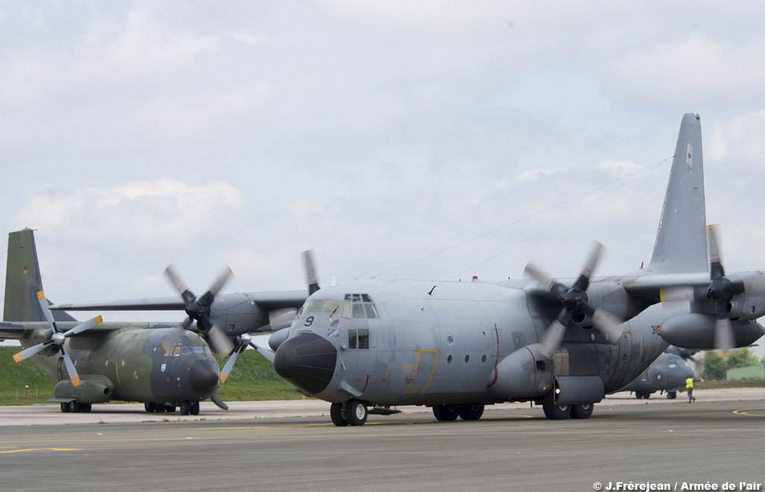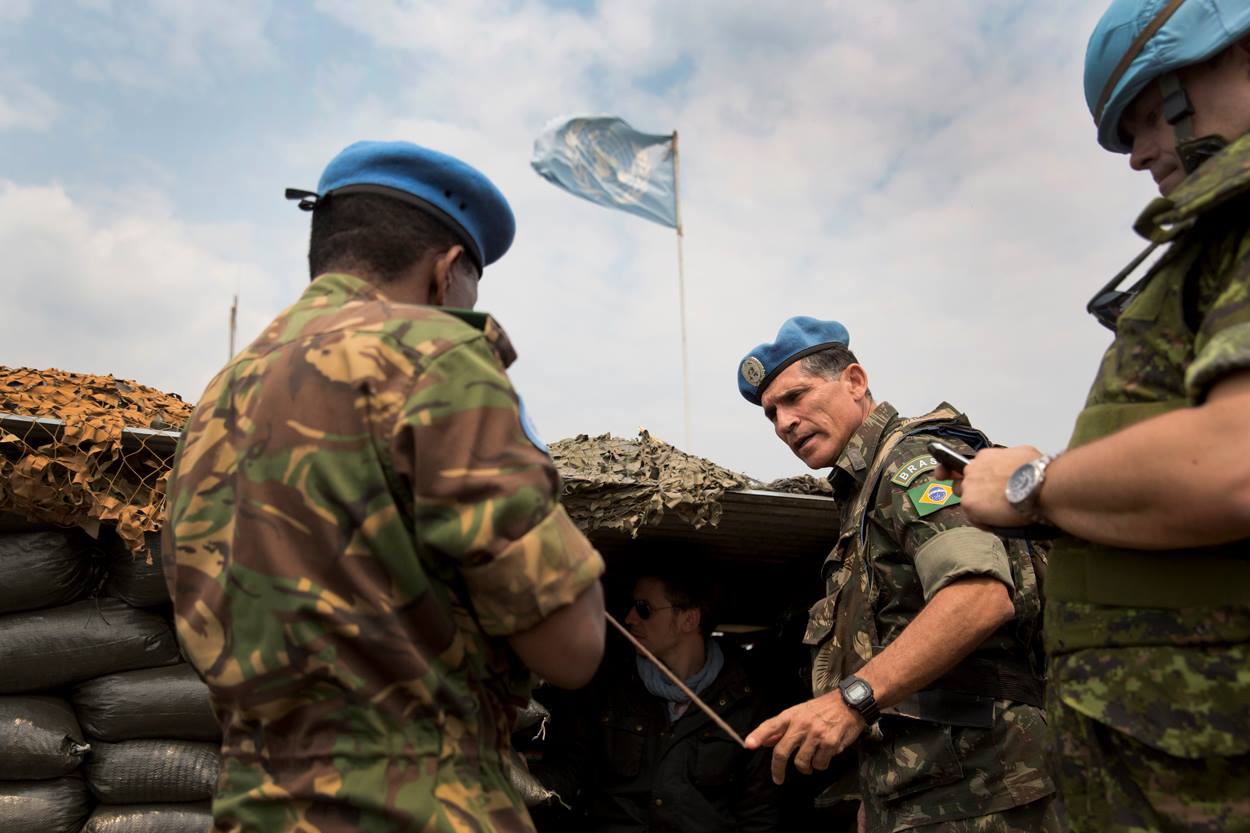A cozy nest for the Super Hercules. A very political and practical act

(BRUSSELS2) The German (von Der Leyen) and French (Le Drian) ministers signed a letter of intent on Tuesday (October 4) to establish a common air base for their future C-130J Super Hercules aircraft.
Twenty C-130s
France already has 14 C-130s (H version) and decided to buy, at the beginning of January, four new planes of the J version (including 2 in the KC tanker version), with a planned arrival between 2017 and 2019. These planes are all based on airbase 123 (BA123) from Orléans-Bricy, within the 2/61 Franche-Comté squadron (and for the special forces in the 3/61 Poitou squadron).
A common squadron by 2021
Germany " plans to acquire between four to six aircraft », Confirmed Ursula von Der Leyen during a visit to Paris which will be « stationed in France ". It's not just about collocating devices. The letter of intent signed clearly specifies the ambition for Germany and France to " establish (by) 2021 a joint airlift squadron for the C-130J Hercules ».
Make up for the delay of the A400M but not only
A necessary purchase on both sides of the Rhine, both to compensate for the “air holes” that can occur in the delivery of the A400Ms but also to complete the segment of the medium carrier off-road. As an officer familiar with the area explained to B2, " we don't need an A400M all the time for our transport or in operation. We need a mid-range device between the Casa and the A400M, to replace the Transall ". It is the same reflection that was made across the Rhine, in a different context. The Luftwaffe will in fact only be equipped with A400Ms when the Transalls, still in service, will be replaced (by around 2020). The German Air Force needs another aircraft. Added to this is a third reason, less often mentioned. If for a technical reason, the aircraft are grounded – as during the crash of the A400M in Spain – there must be an alternative solution.
Strong practical reasons
However, setting up an airbase, a maintenance chain for half a dozen planes, is expensive, very expensive, and nothing guarantees 100% availability. Pragmatism won out. You might as well combine French and German planes to have sufficient mass effect, making it possible to rationalize costs and to have an adequate fleet. In addition, this makes it possible to have common maintenance teams, common on-call grids for mechanics, to be able to alternate fleets according to each other's needs, to do training together, etc. While having a total fleet of around ten C-130 Js available (around twenty C-130 aircraft).
A highly political decision
This letter of intent is very political: a few months before the elections on both sides of the border (in April-May in France, in September in Germany), this allows us to confirm in stone a project that others (perhaps) will be responsible for carrying out. It is also a signal sent to the other Europeans and other NATO allies — some of whom sincerely lack enthusiasm — that their lukewarmness will in no way prevent Paris and Berlin from moving forward and that the joint letter from the two ministers will not is not just a scrap of paper. " We need a strong European pillar of NATO defended von der Leyen in Bratislava. Brexit has sounded the alarm clock for common projects.
A desire to act together
Beyond the practical and political interests, there is undeniably a desire to act together, a complicity that played into this agreement. Between the two ministers, Ursula von der Leyen and Jean-Yves Le Drian, “ the current flows » as confirmed to me by a diplomat (1). " The two ministers see each other often. Teams work together. There is a climate of trust and understanding that is quite unequaled ". And no need for an interpreter. " Ursula speaks perfect French (2). That helps...
A series of details to concretize
However, it should not be hidden that this is only a letter of intent for the moment. There are a number of issues still to be resolved (cost sharing rules, flight conditions, etc.). To base a permanent German operational air unit elsewhere than on national territory is, in itself, a first. And it will take several months of negotiations before reaching a more concrete agreement. A bilateral working group is to meet. to clarify, by the end of the year, how cooperation on tactical airlift can be deepened ».
(Nicolas Gros-Verheyde)
(1) See: Ministers in Bratislava. When the photo says more than any comment
(2) A point that I can confirm


